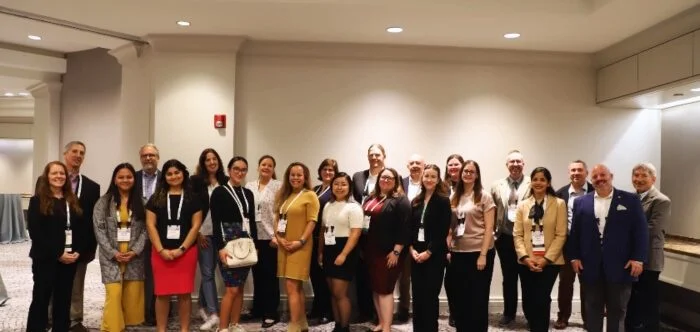Conferences are known for bringing people together to share knowledge, ideas, and research. They play an important role in shaping fields and connecting experts from around the world. Many readers often wonder what makes some events more special, leading them to think about what are top tier conferences?
Top-tier conferences are highly selective academic events with low acceptance rates, strong peer review, influential research, and global participation. They offer career benefits, attract elite speakers, and are indexed in platforms like Scopus or IEEE, making them critical for credibility and impact in any research field.
Do you want to understand why these conferences are valued so highly in research and professional growth? If so, this article will give you every detail you need. You will find clear points, examples, and reasons that explain the importance of top tier conferences.
What are Top Tier Conferences?
Top-tier conferences stand out as the most respected events in any research field. They bring together experts, present groundbreaking ideas, and shape the future of academic discussions. If you want to know what makes a conference truly top tier, here are the key points.
Strict Peer-Review
Every paper submitted to a top-tier conference goes through a strict review. Only the most original and well-structured research gets accepted. These events usually accept fewer than 20–25% of submissions, making the competition intense. This high level of selectivity is why researchers value publication at these venues so highly.
High Academic Impact
Research presented at these conferences often becomes the foundation for future studies. Many papers gain a large number of citations and influence other works in the field. When researchers want to learn about the latest trends and impactful results, they often turn to the proceedings of these events.
Elite Speakers
Renowned experts and pioneers are usually invited as keynote speakers. Their talks not only highlight recent developments but also inspire new directions for research. Attending these conferences allows participants to hear directly from leaders who are shaping the field. This is one reason they are so highly respected.
Strong Reputation
Top-tier conferences build their reputation over time. They consistently deliver quality discussions, well-reviewed papers, and excellent organization. This history of excellence makes them trusted platforms where researchers want to present. A conference with a strong reputation also makes the work published there more valuable.
Career Benefits
Getting accepted into a top-tier conference is a big achievement. For many researchers, it plays a crucial role in advancing careers, helping with promotions, or earning recognition in academic circles. It shows the researcher’s ability to contribute at the highest level.
Global Reach
These conferences often attract participants from different countries. The diverse audience creates opportunities to connect with experts worldwide. For example, some researchers look forward to attending a global event like an international conference in Canada, the USA, the UAE, or any other country, where they get the chance to present their work on a wider stage.
Competitive Environment
The high level of competition pushes researchers to improve their work. Submitting to a top-tier conference means refining the paper until it meets the strict standards. This competition encourages strong research and adds to the overall prestige of the event, making the concept of conference tier an important way to measure the quality and recognition of academic gatherings.
Reliable Proceedings
Proceedings from these events are usually published in well-known indexing services like Scopus or IEEE. This ensures the work is easily accessible to others and remains part of the academic record. Many researchers rely on these proceedings for trusted, high-quality references.
Influence on Fields
Top-tier conferences often set the direction for future research. New ideas presented at these events open up discussions that later become major research themes. They are not just platforms for sharing work but also for shaping what comes next in a discipline.
A top-tier conference stands out for its selectivity, influence, and strong reputation. Publishing in such an event is more than just recognition; it is a sign of quality research that gains attention across the academic world.
What Fields Have Recognized Top Tier Conferences?
Every industry has its own important events where researchers and professionals share their best work. These are known as top-tier conferences. They are respected worldwide and attract experts from different fields. Let’s explore where these top conferences can be found.
Technology and Computing
Top tier conferences bring together researchers, engineers, and innovators in the technology world. They focus on subjects like artificial intelligence, computer graphics, and network systems. These events often set new directions for the industry. They are seen as trusted places for sharing advanced ideas and discoveries.
Business and Management
Business conferences are also recognized at a global level. They usually highlight leadership, corporate strategy, and global markets. Experts from research and industry use them to share fresh insights. These events strongly influence how business practices develop and spread worldwide.
Medicine and Health
In medicine, top tier conferences play a key role in sharing research and treatments. They bring together doctors, scientists, and health specialists from many areas. Topics often include disease prevention, medical technology, and patient care. These gatherings are important for improving health knowledge and practices worldwide.
Engineering and Development
Engineering fields also hold respected conferences that focus on building and innovation. Subjects often include robotics, product design, and advanced technology systems. Experts use these events to show their latest solutions. They help drive progress in areas that shape the modern world.
Social Sciences and Humanities
Top tier conferences are not limited to science and technology. In social sciences and humanities, topics include psychology, sociology, education, and culture. These events bring together researchers to discuss human behavior and society. They often influence policies, teaching methods, and public understanding.
Across every field, from technology and business to health and society, such conferences create a trusted space for experts to share knowledge, shape ideas, and build progress for the future. They create a trusted space for experts to share knowledge, shape ideas, and build progress for the future.
Why Do Top Tier Conferences Matter in Professional Growth?
Attending top tier conferences can shape a person’s career in many ways. They bring together experts, researchers, and professionals from across the world. These events provide a stage where new ideas are shared and recognized. That is why many people look forward to popular conferences each year, as they open doors to learning, networking, and building strong professional connections.
Career Visibility
Top tier conferences highlight quality research and fresh ideas. When professionals present their work here, it often gets noticed by leaders in the field. This visibility builds credibility and can open up new chances for collaboration, academic recognition, or future roles in related areas.
Networking Value
Conferences create a space to connect with peers and experts. Meeting people face-to-face helps in building lasting contacts. These connections can later turn into research partnerships or job opportunities. Networking is a steady way of staying linked with the professional community.
Industry Knowledge
These events are not just about presenting papers. They also cover ongoing trends, methods, and innovations. For many professionals, the real value lies in the key components of a conference: expert speakers, networking sessions, and research presentations, which together create opportunities for learning and career advancement.
Academic Recognition
Presenting at a top tier event often means your work has been reviewed and approved by experts. This adds weight to your profile. Such recognition is useful for building trust in your research and making your contributions stand out in your field.
Professional Standards
High-level conferences usually follow strict standards for acceptance. This means participants get to learn from quality content. Being part of such events sets a benchmark for your own work, motivating you to aim for higher research quality and better professional practices.
Shortly, top tier conferences matter because they help professionals gain visibility, knowledge, and strong networks. They bring together high-quality work and high standards, making them important platforms for steady career growth and professional development.
How Do Top Tier Conferences Differ From Regular Conferences?
Conferences are not all the same. Some stand out as top tier because of their wide reach, big impact, and strong reputation. Others are smaller and simpler. To see the main differences, let’s compare them side by side.
| Aspect | Top Tier Conferences | Regular Conferences |
| Scale | Large scale, often global, with thousands of participants. | Smaller scale, usually regional or local, with fewer participants. |
| Audience | Attracts top researchers, global experts, and industry leaders. | Mostly local researchers, early-career professionals, or general attendees. |
| Speaker Quality | Features highly respected and world-renowned experts in their fields. | Speakers are often less established or mid-level professionals. |
| Review Process | Strict peer-review system with high rejection rates to ensure quality. | Less rigorous review process, often easier acceptance of papers. |
| Publication | Papers often published in top journals or indexed in Scopus, IEEE, or Web of Science. | Publications may not be indexed or widely recognized. |
| Networking | Offers strong networking with global experts and leading organizations. | Limited networking, usually within smaller groups or local communities. |
| Prestige | Highly prestigious, attending or presenting here boosts academic and professional reputation. | Less recognized, adds limited value to reputation. |
| Topics | Covers cutting-edge research, new innovations, and global challenges. | May focus on broader or general topics without much innovation. |
| Opportunities | Opens doors to collaborations, funding, and career growth. | Fewer opportunities for global collaborations or recognition. |
| Outcomes | Results in impactful discussions, stronger citations, and long-term professional value. | Outcomes are usually short-term, with limited academic or career impact. |
Top tier conferences offer bigger opportunities for learning, networking, and recognition, while regular conferences still provide value on a smaller scale. Knowing these differences helps in choosing the right event for your goals.
How Do Sponsorships Impact the Status of Top Tier Conferences?
Sponsorship plays a big role in helping to grow conferences and their reputation. Sponsors provide financial support, resources, and recognition that can make an event stand out. The bigger the sponsor, the higher the visibility and respect the conference gets. Let’s explore how sponsorships influence top-tier conferences.
Financial Strength
Sponsorships provide the funds needed to run large events. From renting venues to arranging technology and logistics, money from sponsors makes everything possible. Without these funds, many conferences would struggle to meet high standards. Strong sponsorships often lead to well-organized and more professional events.
Branding Impact
When well-known companies sponsor a conference, their brand adds credibility to the event. People trust and respect the names they already know. Big companies often contribute through different conference sponsorship tiers, which can enhance the event’s reputation and global reach.
Speaker Attraction
High sponsorship levels often allow organizers to invite top speakers. Sponsors sometimes even help cover travel costs and honorariums. Having industry leaders present at a conference boosts its status, making it more appealing to researchers, professionals, and media outlets alike.
Global Reach
Sponsors help conferences grow beyond local or regional limits. With strong financial and brand backing, events can attract international attendees. Sponsors may also promote the conference through their networks, which spreads awareness worldwide and builds stronger recognition for the event.
Long-term Value
A conference supported by trusted sponsors often gains long-term credibility. Attendees feel more confident participating when they see consistent sponsorship from respected organizations. This lasting relationship between sponsors and conferences helps build trust, reliability, and growth over time.
Sponsorships shape how people view conferences, from financial backing to global recognition. The more support an event has, the stronger its position becomes in the academic and professional world.
FAQs About What are Top Tier Conferences?
Top tier conferences are often seen as the highest standard in research and professional fields. People have many questions about what makes them special and how they work. Here are some clear answers to help understand them better.
How Do Top Tier Conferences Encourage Innovation?
Top tier conferences encourage innovation by giving space to new and creative ideas. Researchers push harder to present work that is fresh and original. The competitive environment motivates them to improve their methods. This way, these conferences often highlight the most cutting-edge developments.
Why Do Top Tier Conferences Attract International Attention?
They attract international attention because they gather experts from different countries. The global nature of these events creates a mix of perspectives. Researchers get to learn about worldwide challenges and solutions. This international presence adds value and recognition to the work presented there.
How Do Top Tier Conferences Impact Education?
These conferences often set examples that shape teaching and learning. Professors and educators use findings from them to update course materials. Students benefit because they learn the most current research. Over time, this improves the overall quality of education and academic standards.
Why Are Top Tier Conferences Expensive to Attend?
The cost is usually higher because of the quality of the event. Expenses include venue, technology, guest speakers, and publishing of research. Sponsors help, but attendees often share part of the cost. The value, however, comes from the quality of knowledge and contacts gained.
How Do Top Tier Conferences Affect Research Funding?
Funding bodies often look at whether a researcher has presented at top tier conferences. Acceptance in such events shows the research has passed strict quality checks. This makes it easier to gain trust and attract financial support. In this way, top conferences open doors to new funding opportunities.
What Role Does Media Play in Top Tier Conferences?
Media coverage plays a strong role in spreading the outcomes of these events. News platforms and academic magazines often highlight the most exciting findings. This brings attention to both the research and the researchers. Media involvement increases the reach of the conference beyond its attendees.
How Do Top Tier Conferences Build Professional Confidence?
Being selected to present at such a conference is a sign of recognition. It gives researchers confidence that their work is valuable. Speaking in front of experts also builds public speaking and presentation skills. Over time, this confidence helps in career growth.
Why Do Employers Value Participation in Top Tier Conferences?
Employers see participation as proof of strong skills and dedication. It shows the person is engaged with high-level research and industry practices. Attending or presenting at these events often adds weight to a resume. This can lead to better job opportunities or promotions.
How Do Top Tier Conferences Promote Collaboration?
They create chances for researchers and professionals to connect directly. Informal talks during breaks or networking sessions often lead to future projects. People from different backgrounds find common interests and work together. These collaborations often result in strong, long-term partnerships.
Why Do Top Tier Conferences Remain Relevant Over Time?
They remain relevant because they adapt to new challenges and topics. Each year, they focus on the most pressing issues in the field. This ensures they are always connected to what matters most. Their consistency in quality makes them trusted platforms for decades.
Conclusion
Top tier conferences hold a unique place in the academic and professional world. They are built on strict review systems, global reach, and strong reputations. For researchers, attending or publishing here is not only an achievement but also a mark of quality work that can influence future opportunities.
If you are wondering what are top tier conferences, the answer is simple: they are highly selective events with strict peer review, impactful research, and respected speakers. They set the tone for upcoming studies and help shape the direction of entire fields.
To make the most of these events, focus on deadlines, review their proceedings, and always check for credibility before submitting. A little preparation goes a long way in such competitive spaces. Wishing you success as you aim for these prestigious platforms.








